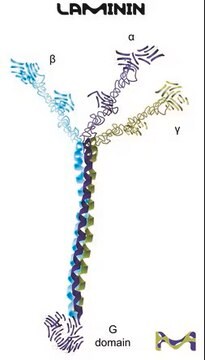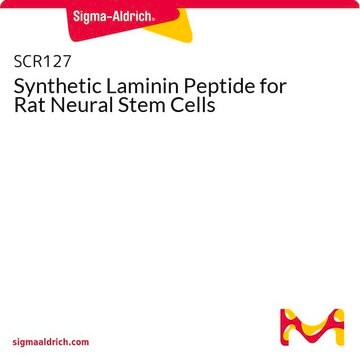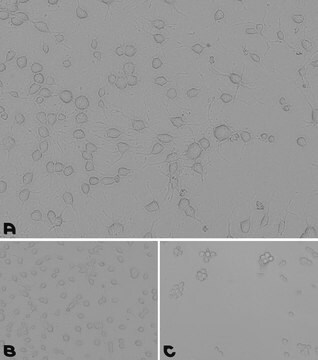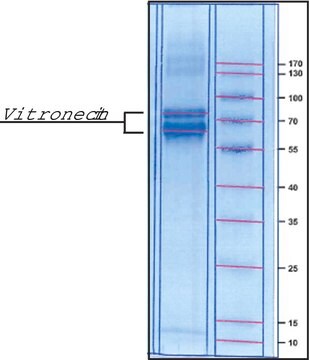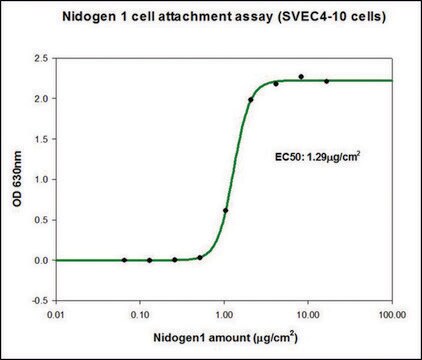L6274
Laminin from human placenta
liquid, BioReagent, suitable for cell culture
Synonym(s):
Cell culture grade laminin, Human Laminin
About This Item
Recommended Products
biological source
human placenta
Quality Level
product line
BioReagent
form
liquid
concentration
0.5 mg/mL in Tris-buffered saline
technique(s)
cell culture | mammalian: suitable
surface coverage
1‑2 μg/cm2
UniProt accession no.
shipped in
dry ice
storage temp.
−70°C
Gene Information
human ... LAMB1(3912)
Application
Biochem/physiol Actions
Components
Caution
Preparation Note
Not finding the right product?
Try our Product Selector Tool.
Storage Class Code
10 - Combustible liquids
WGK
WGK 3
Flash Point(F)
Not applicable
Flash Point(C)
Not applicable
Certificates of Analysis (COA)
Search for Certificates of Analysis (COA) by entering the products Lot/Batch Number. Lot and Batch Numbers can be found on a product’s label following the words ‘Lot’ or ‘Batch’.
Already Own This Product?
Find documentation for the products that you have recently purchased in the Document Library.
Customers Also Viewed
Articles
Hydrogela are the most widely used systems for 3D cell culture. Learn more about this technology (what are hydrogels? How to chose?)
Cancer stem cell media, spheroid plates and cancer stem cell markers to culture and characterize CSC populations.
Our team of scientists has experience in all areas of research including Life Science, Material Science, Chemical Synthesis, Chromatography, Analytical and many others.
Contact Technical Service
